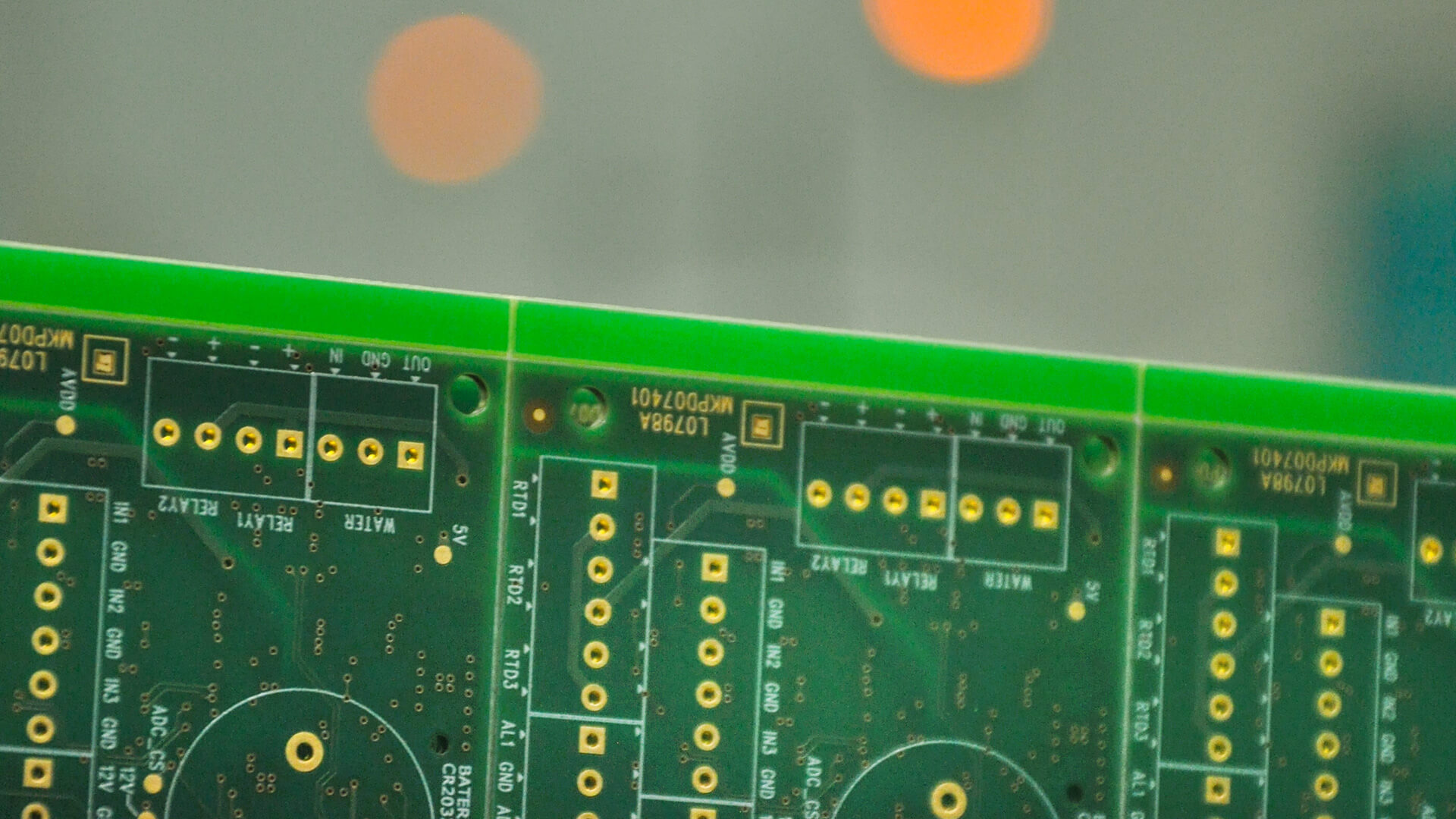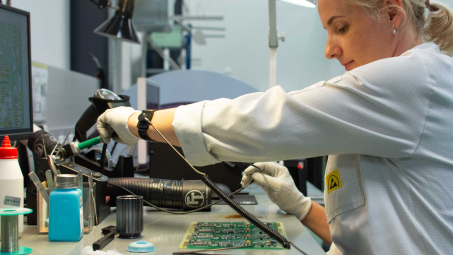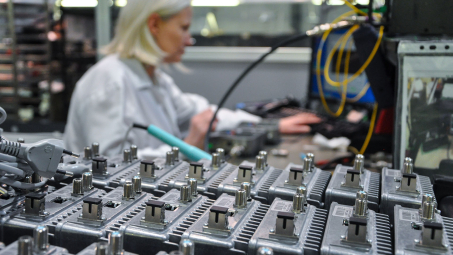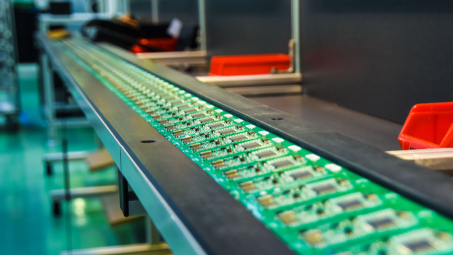Single Layer PCB: Everything You Need to Know About Single-Layer PCBs
Creating an electronic circuit project typically involves the production of a printed circuit board (PCB). There are many different PCB types available on the market today. However, the single-layer PCB holds a special place among the various types of printed circuit boards available. If you've ever wondered what single-layer PCBs are, how they work, and when they're the ideal choice for your projects, you've come to the right place.
In this comprehensive guide, we'll take a look at the details of Single-layer PCBs, including their design, the advantages they offer, and the situations where they outshine double-sided PCB or multi-layer PCB.
Table of Contents
Single-Sided PCB-What is Single Layering?
A single-layer PCB, alternatively referred to as a single-sided PCB, is a specific type of printed circuit board. It features a single layer of conductive material on one side of the board, while the opposite side is reserved for the integration of various electronic components onto the circuit board (conductor pattern).
Typically, these single-layer boards contain only one layer of conducting material, often crafted from copper foil, with manufacturers etching it to create the circuit pattern. Notably, single-sided boards may be made from a variety of materials, so you have several options to consider.
Aluminum material substrate, known for affordability and excellent heat conduction, excels in heat dissipation. FR-4 Grade Fiberglass Laminates, crafted from fibreglass, offer a balance of heat resistance and cost-effectiveness. CEM-1 and CEM-3, using fibreglass and epoxy, are both budget-friendly options with good heat resistance. Lastly, copper-based single-layer PCBs, featuring thin copper foil laminated onto a dielectric substrate, excel in applications demanding superior electrical and thermal conductivity. Each material brings its unique advantages to the table, addressing specific project requirements effectively.
The Single-layer PCB was the foundation of PCB technology and continues to play a significant role in the electronics industry. Furthermore, the single-sided PCB is still functional in a wide range of applications, including in different electronic components where minimal costs are required.
Single-layer PCB Design
As single-layer boards use only one conductive layer, there is no intersection or overlapping of conductive paths. A PCB's base material, also known as the substrate, is made of a thermal insulating material, most commonly compacted fibreglass, which ensures the board's strength and durability. The substrate material selected depends on whether the board is flexible or rigid. A copper layer sits on top of this substrate, acting as a conducting path for the circuit board's various components. Various boards require different copper thickness, calculated in ounces per square foot and adapted to unique needs and expectations.
On one side of the copper foil, a solder mask layer is applied to protect it from unintended conduction, preventing direct contact with conducting materials. This thin layer acts as a crucial insulating barrier. On the flip side, there's a silkscreen layer, positioned above all other layers, primarily utilized to imprint characters and symbols on the board. This addition simplifies the understanding of the PCB, aiding in its functionality and identification.
The circuit board is made by laminating it with martial; on the other side, on the other side, electronics are connected electrically and fixed mechanically.
What is the Difference Between Single-layer and Multi-layer PCBs?
The difference between a single-layer PCB and a multilayer PCB is necessary in determining their application, complexity, and cost. Single-layer or Single-sided PCBs feature a fundamental design with just one layer of conductive material, usually copper, on one side of the board. On the flip side, you'll typically find a non-conductive substrate, often made of fibreglass or another insulating material. These PCBs are a go-to choice for hobbyists and students due to their simplicity.
Multilayer PCB, on the other hand, is a very different entity. These boards include two or more layers of conductive components sandwiched between insulating layers, allowing for much greater wiring and component placement. As a result, they are perfect for more complex projects or electronic devices with limited space and complex circuits.
One of the most significant advantages of multilayer PCB is their ability to include a ground plane or ground grids, which are excellent at minimizing electrical noise. Traces can cross one other by extending one trace beneath the board and then reappearing on the top side, making the designing process easier.
While multilayer PCB provide greater design freedom and sophistication, they also add complexity and cost. These boards are often used in high-end electronics, such as sophisticated smartphones with numerous layers to support complicated circuitry, where performance and compactness are crucial.
Types of Single Layer or Single-Sided Board
Let us take a closer glance at the different types of single-sided PCB.
Single-Layer Rigid PCBs:
Single-layer rigid PCBs are made of a rigid material, usually fibreglass. They cannot bend or flex, yet their stiffness guarantees that the circuit stays intact and resistant to fracture. These boards are used in devices like power supplies and calculators.
Single-Layer Flexible PCBs:
Single-layer flexible PCBs, on the other hand, use a flexible material, most typically plastics. These single PCB boards provide advantages like as flexibility and adaptability, but they are more expensive to manufacture. They are utilized in situations where bendability is essential.
Single Layer High-Frequency PCBs:
Single-Layer PCBs: High-frequency single-layer board built for gigahertz frequencies use materials such as Teflon or polyphenylene oxide (PPO). Consider thermal expansion, dielectric loss, and water absorption while selecting these boards.
Single Layer Rigid-Flex PCBs:
Single-layer rigid-flex PCBs combine the properties of both fibreglass and plastic. These boards offer significant advantages over single-layer rigid and flexible PCBs, such as reducing overall PCB size and weight. They are ideal for applications where space constraints are a concern.
PCBs circuit boards with a single layer of aluminium backing:
Aluminium-backed single-layer PCBs differ from copper-backed PCBs in that they have an aluminium substrate. Thermal insulating materials are used to efficiently transmit heat away from the insulating layer. These boards are useful in situations when heat management is crucial.
Advantages of the single-sided circuit board
- Design, installation and manufacturing process are simple and straightforward, compared to a double-sided PCB or the multilayer PCBs.
- Lower cost, especially for mass production. A Single-layer PCB is often less expensive to produce and is an excellent alternative for low-density designs.
- Most PCB manufacturers consider it to be renowned, common, and simple to understand.
- Since it consists of only a single layer, drilling, soldering, de-soldering, and the components inserting process on the circuit board is made easier.
- Reduced likelihood of concerns such as short-circuiting and noise production during the manufacturing process.
- Components are put on just one layer requiring the use of a lower jumper to correct the circuit.
- Requires Less time for a fault diagnosis and repair
Disadvantages of single-layer circuit boards
- A single-layer PCB is not suitable for high-speed or high-density circuits.
- It does not offer much space for complex circuits or many components.
- It is not as space-efficient as a double-sided PCB.
- It is larger and heavier than multi-layer PCBs.
- A single-sided PCB is more susceptible to electromagnetic interference.
-
It is more difficult to route signals on a single-sided PCB.
Single Layer PCB Applications
Single-layer PCB are used in a wide variety of electronic device, from simple to complex applications. Some of these include:
- Camera systems
- Surveillance equipment
- Calculators
- Printers
- Solid state drives
- Coffee makers
- LED lighting
- Packaging equipment
- Sensor products
- Power supplies
- Relays
- Radio and stereo equipment
- Vending machine circuits.
- Timing circuits
- Digital microwave oven timer circuits
- Photocopy and printer machine circuits
Looking for an EMS Partner?
If you are looking for a PCB manufacturer for your single layer PCB project, VECTOR BLUE HUB is a leading provider of PCB services. We offer a wide range of capabilities, including design, manufacturing, and assembly. We can help you get your project from concept to production quickly and efficiently.
Contact us today to learn more about our single layer PCB services!











Jarosław Krzyżanowski
Jarosław has over fifteen years of experience in electronics manufacturing processes (SMT, THT, AOI, X-RAY, SOLDER WAVE, SELECTIVE, ASSEMBLY). As Process Leader, he ensures an appropriate level of skill in the manufacturing staff, work standards, processes, the appropriate workplace infrastructure, tools and the best use of technological solutions. He gets the most satisfaction out of teamwork. He also likes to look for out-of-the-box innovative solutions our customers require. Music is Jarek’s greatest passion; he also loves family walks and DIY.